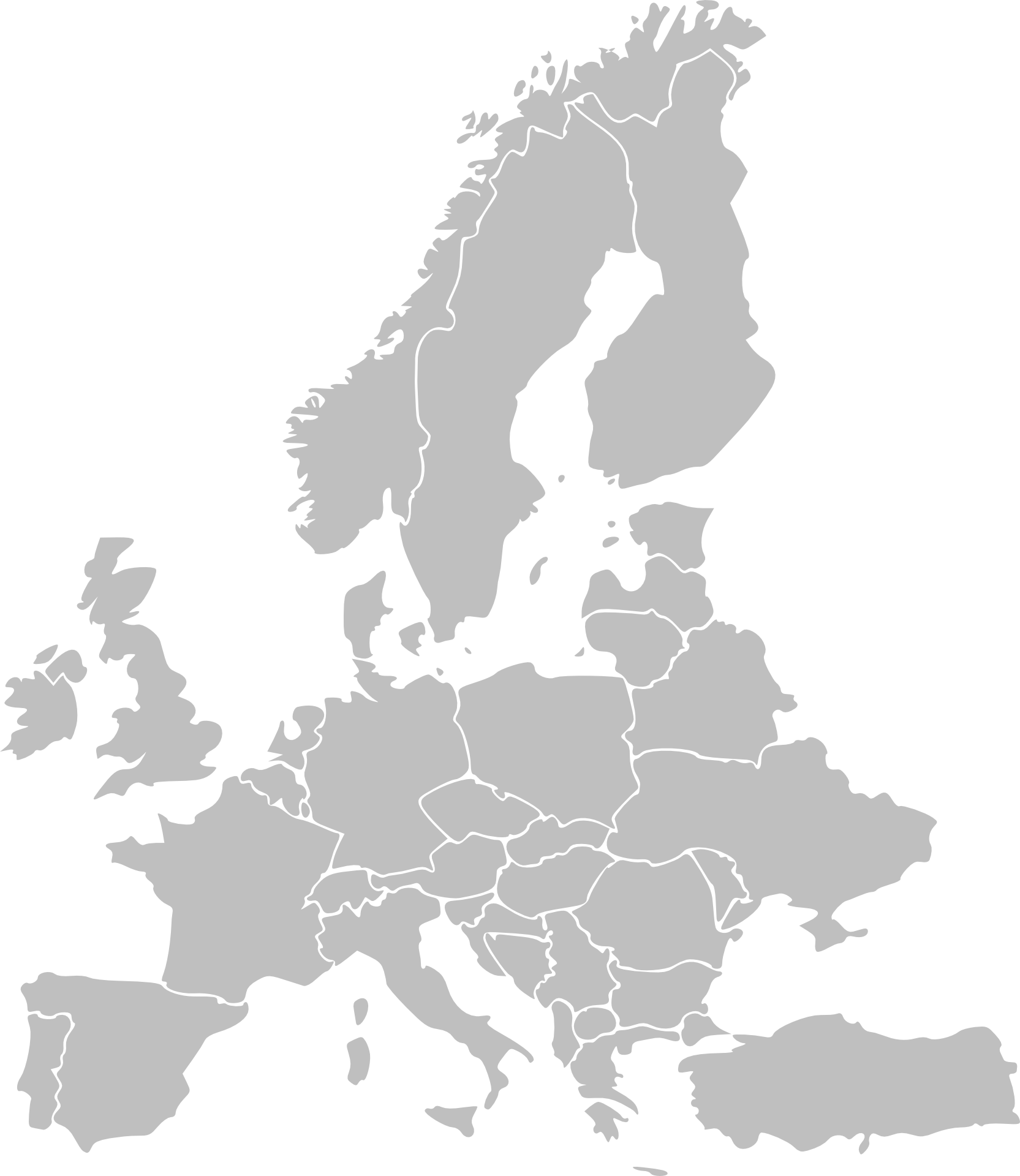Exploring The Europe Map Outline: A Comprehensive Guide
The Europe map outline serves as an essential tool for travelers, educators, and anyone interested in the geographical layout of the continent. With its diverse cultures, languages, and landscapes, Europe is a fascinating region that attracts millions of tourists each year. This article will delve deep into the significance of the Europe map outline, its features, and how it can be utilized effectively.
In this guide, we will explore various aspects of the Europe map outline, including its historical context, the countries it encompasses, and the best ways to use it for educational and travel purposes. Understanding the geography of Europe is crucial for anyone looking to navigate its complex political and cultural landscape.
Whether you are a student studying geography, a traveler planning your next adventure, or simply someone curious about Europe, this comprehensive guide will provide valuable insights into the Europe map outline. Let's embark on this journey together!
Table of Contents
- 1. History of the Europe Map Outline
- 2. Importance of the Europe Map Outline
- 3. Key Features of the Europe Map Outline
- 4. Countries Included in the Europe Map Outline
- 5. Uses of the Europe Map Outline
- 6. Resources for Finding Europe Map Outlines
- 7. Statistics and Facts About Europe
- 8. Conclusion
1. History of the Europe Map Outline
The concept of mapping Europe dates back to ancient civilizations, where early cartographers attempted to depict the known world. The Europe map outline has evolved significantly over the centuries, reflecting changes in political boundaries, cultures, and geographical knowledge.
During the Middle Ages, European maps were often created for religious purposes, showcasing pilgrimage routes and holy sites. The Renaissance marked a turning point in map-making, with improved accuracy and the introduction of new exploration techniques.
Today, the Europe map outline is a culmination of centuries of geographical exploration and technological advancements, providing a clear representation of the continent's structure.
2. Importance of the Europe Map Outline
The Europe map outline is vital for several reasons:
- Educational Tool: It serves as a fundamental resource for students studying geography, history, and social sciences.
- Travel Planning: Tourists can use the outline to plan itineraries, understand regional differences, and navigate effectively.
- Political Analysis: Researchers and political analysts utilize the map to study geopolitical trends and relationships between countries.
3. Key Features of the Europe Map Outline
A well-designed Europe map outline includes several key features:
- Country Borders: Clear delineation of national boundaries.
- Major Cities: Location of capitals and significant urban areas.
- Physical Geography: Representation of mountains, rivers, and other natural features.
3.1 Political and Physical Maps
There are two main types of maps: political and physical. Political maps focus on country borders and significant cities, while physical maps highlight geographical features like mountains and rivers. Understanding both types is essential for a comprehensive view of Europe.
3.2 Scale and Proportions
The scale of the map plays a crucial role in its usefulness. A scale that accurately represents distances will help users gauge travel times and distances across the continent.
4. Countries Included in the Europe Map Outline
Europe comprises approximately 44 countries, each with its unique cultural and historical background. Here’s a summary of some key countries:
| Country | Capital | Population |
|---|---|---|
| France | Paris | 67 million |
| Germany | Berlin | 83 million |
| Italy | Rome | 60 million |
| Spain | Madrid | 47 million |
| United Kingdom | London | 67 million |
5. Uses of the Europe Map Outline
The Europe map outline has various applications:
- Travel Guides: Helping tourists navigate and explore different countries.
- Educational Resources: Used in classrooms to teach geography and history.
- Research and Analysis: Supporting academic studies and geopolitical analysis.
6. Resources for Finding Europe Map Outlines
There are numerous resources available for obtaining Europe map outlines:
- Online Map Services: Websites like Google Maps and OpenStreetMap.
- Educational Websites: Platforms like National Geographic and educational institutions provide downloadable maps.
- Books and Atlases: Traditional atlases that include detailed maps of Europe.
7. Statistics and Facts About Europe
Here are some interesting statistics about Europe that highlight its diversity:
- Europe is the second smallest continent, covering about 10.18 million square kilometers.
- It is home to over 740 million people, making it the third most populous continent.
- The European Union has 27 member countries, promoting economic and political cooperation.
8. Conclusion
In conclusion, the Europe map outline is a valuable resource for understanding the continent's geography, history, and cultural diversity. Whether for educational purposes or travel planning, it provides essential information that enhances our knowledge of Europe.
We encourage you to explore various resources and utilize the Europe map outline in your future endeavors. Feel free to leave a comment, share this article, or check out other informative articles on our site!
Thank you for joining us on this journey through the Europe map outline. We hope to see you back soon for more exciting content!
Understanding And Dealing With Broken Cars: A Comprehensive Guide
Exploring The Life And Career Of Lucas Dick: A Comprehensive Biography
Teddy Bear Cartoon: The Adorable World Of Animated Bears

Black And White Europe Map 20 Free PDF Printables Printablee

Blank Map of Europe

Blank outline map of europe simplified wireframe Vector Image